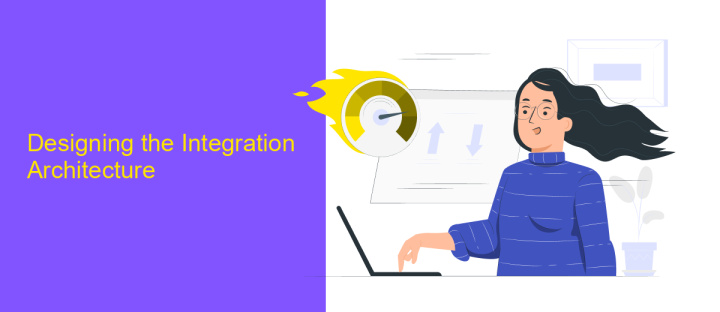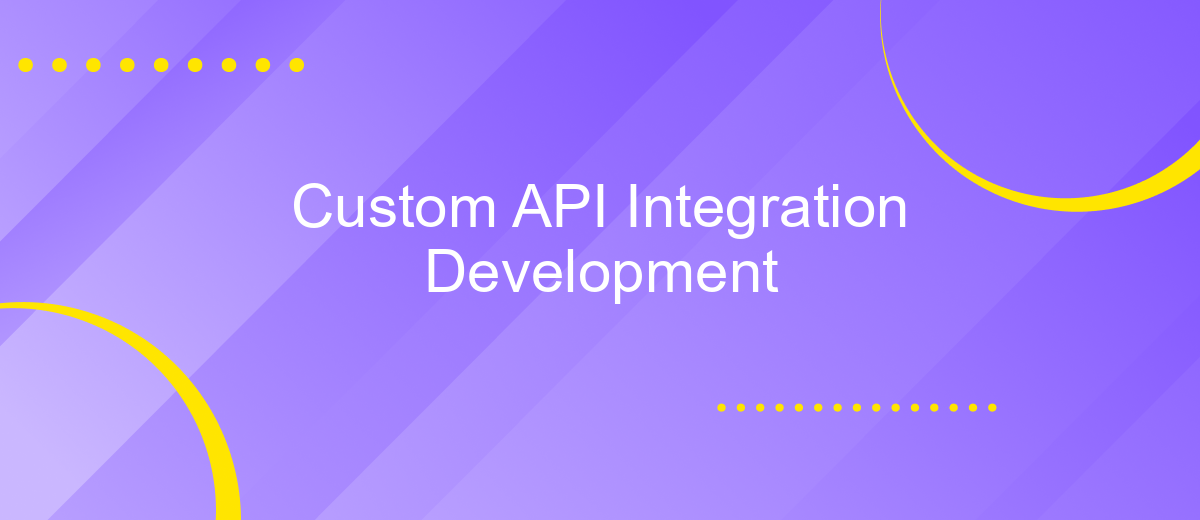Custom API Integration Development
In today's rapidly evolving digital landscape, businesses need seamless communication between various software systems to stay competitive. Custom API integration development plays a crucial role in achieving this by enabling tailored connections between diverse applications. By leveraging bespoke API solutions, companies can enhance operational efficiency, improve data exchange, and foster innovation. This article explores the significance of custom API integration and how it can transform business processes.
Understanding the Custom API and its Documentation
Custom APIs are tailored interfaces designed to meet specific business needs, enabling seamless integration between different software systems. Understanding a custom API involves grasping its unique functionalities, endpoints, and the data it exchanges. A well-documented API simplifies this process, providing developers with essential information to facilitate successful integration.
- Endpoints: These are specific paths that allow interaction with the API, each serving a unique function.
- Authentication: Details on how to securely access the API, ensuring data protection.
- Rate Limits: Information on the number of requests allowed within a certain timeframe, preventing abuse.
- Data Formats: The structure and type of data the API accepts and returns, such as JSON or XML.
- Error Codes: A list of potential error messages and their meanings, aiding in troubleshooting.
Comprehensive API documentation is crucial for developers, as it acts as a roadmap, guiding them through various integration stages. It ensures that developers can effectively utilize the API's capabilities, minimizing errors and enhancing the overall development process. Proper documentation not only saves time but also improves the quality and reliability of the integration.
Designing the Integration Architecture

Designing an integration architecture for custom API development requires a strategic approach that ensures seamless communication between disparate systems. The first step is to thoroughly assess the requirements and capabilities of the systems involved. This involves understanding the data flow, security protocols, and performance expectations. A robust architecture should be scalable, allowing for future enhancements without significant overhauls. It is crucial to define clear endpoints and data formats to facilitate smooth data exchange. Moreover, implementing error-handling mechanisms and logging can help in quickly identifying and resolving issues, ensuring reliable operation.
Leveraging integration platforms like ApiX-Drive can significantly streamline the development process. ApiX-Drive offers pre-built connectors and a user-friendly interface, allowing developers to focus on core functionality rather than the intricacies of integration. By using such a service, teams can reduce development time and minimize potential errors. Additionally, ApiX-Drive supports various authentication methods, ensuring secure data transactions. Incorporating these tools into the integration architecture not only enhances efficiency but also provides a scalable solution that can adapt to evolving business needs.
Development and Coding of the Integration Logic

The development and coding of the integration logic are crucial steps in custom API integration. This phase involves translating the designed architecture into functional code that enables seamless communication between different software systems. It requires a deep understanding of both the source and target APIs, ensuring that data is correctly mapped and transferred without errors. The integration logic must be robust, efficient, and secure to handle potential edge cases and prevent data breaches.
- Analyze API documentation to understand endpoints, authentication, and data formats.
- Design a data mapping strategy to align disparate data structures.
- Write code to handle API requests and responses securely and efficiently.
- Implement error handling and logging to troubleshoot and resolve issues promptly.
- Conduct thorough testing to ensure the integration meets all functional requirements.
After coding, the integration logic must undergo rigorous testing to validate its functionality and performance. Testing involves simulating various scenarios to ensure the integration behaves as expected under different conditions. Once verified, the integration is deployed, and continuous monitoring is established to maintain its reliability and performance over time. This systematic approach ensures a successful and sustainable custom API integration.
Testing and Quality Assurance of the Integration

Testing and quality assurance are crucial steps in the custom API integration development process. Ensuring that the integration functions as intended requires a comprehensive approach to identify and rectify any potential issues. This not only improves the reliability of the integration but also enhances the overall user experience.
Initial testing should focus on verifying the basic functionality of the API integration. This involves checking whether the API correctly communicates with the involved systems, processes data accurately, and handles errors gracefully. Automated testing tools can be employed to streamline this process and provide consistent results.
- Conduct unit tests to verify individual components.
- Perform integration tests to ensure seamless interaction between systems.
- Utilize regression testing to confirm that new changes do not disrupt existing functionality.
- Implement load testing to assess performance under various conditions.
After completing the testing phase, it is essential to document any issues encountered and the solutions implemented. This documentation will serve as a valuable resource for future maintenance and updates. Ultimately, a thorough quality assurance process will ensure a robust and efficient API integration that meets the needs of its users.


Deployment and Maintenance of the Custom API Integration
Deploying a custom API integration involves a series of meticulous steps to ensure seamless functionality across platforms. Initially, it is crucial to set up a robust hosting environment that can handle the expected load and provide scalability for future growth. Utilizing cloud services such as AWS or Azure can offer flexibility and reliability. Once the environment is ready, the API should be deployed with proper version control and documentation to facilitate smooth updates and debugging. Additionally, tools like ApiX-Drive can simplify the integration process by providing user-friendly interfaces and automation capabilities, reducing the need for extensive manual coding.
Maintenance of the custom API integration is an ongoing process that requires regular monitoring and optimization. Implementing logging and monitoring tools helps detect issues early and ensures the API runs efficiently. Regular updates and patches are essential to address security vulnerabilities and improve performance. Moreover, gathering feedback from users can provide insights into potential enhancements. ApiX-Drive can assist in maintaining the integration by offering automated monitoring and alert systems, ensuring the API remains reliable and up-to-date with minimal manual intervention. Consistent maintenance is key to sustaining the API's effectiveness and meeting evolving business needs.
FAQ
What is custom API integration development?
Why is custom API integration important for businesses?
How long does it typically take to develop a custom API integration?
What are the common challenges faced during API integration?
Can non-technical users set up API integrations?
Strive to take your business to the next level, achieve your goals faster and more efficiently? Apix-Drive is your reliable assistant for these tasks. An online service and application connector will help you automate key business processes and get rid of the routine. You and your employees will free up time for important core tasks. Try Apix-Drive features for free to see the effectiveness of the online connector for yourself.

